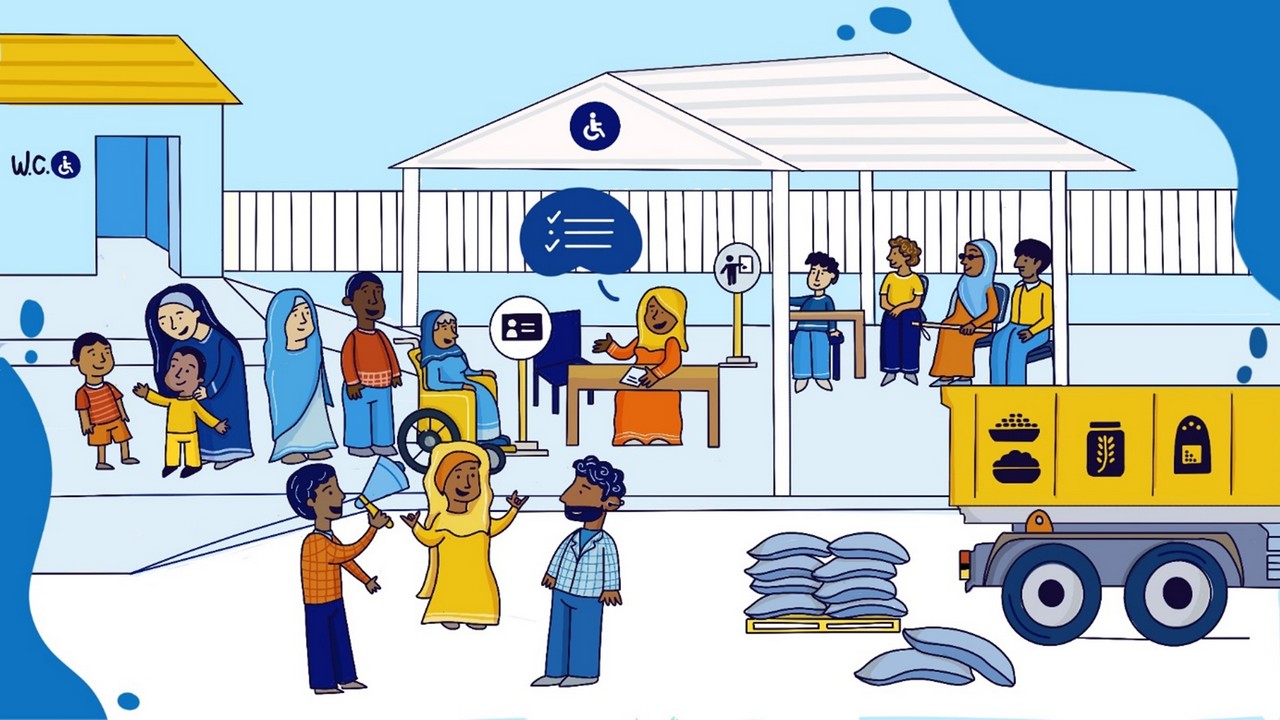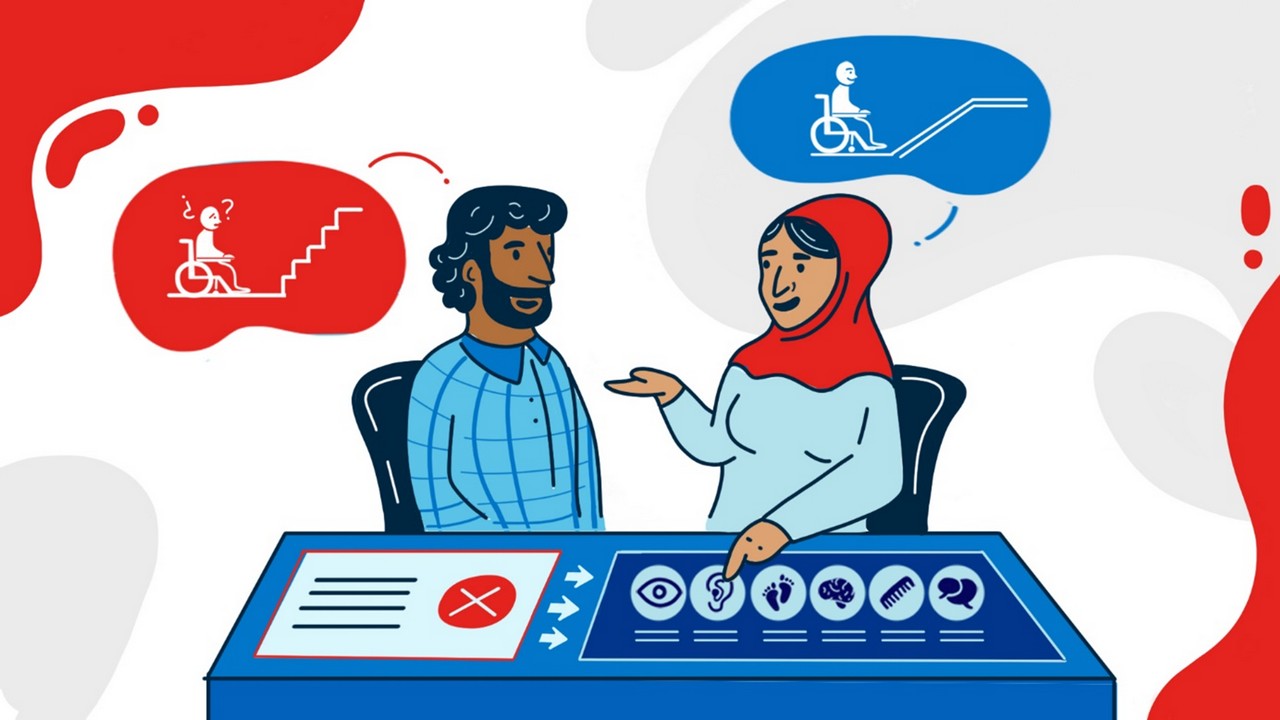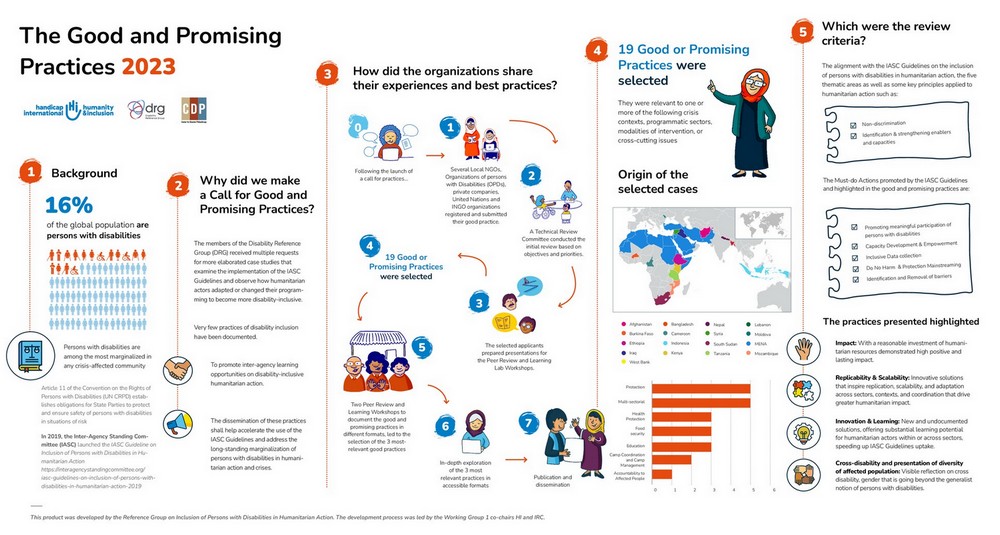‘From Guidelines to Action’ project
Supporting the operationalization of the Inter agency standing committee (IASC) Guidelines on inclusion of persons with disabilities in humanitarian action (project implemented between 2022 and 2024).




© Amazink Studio / HI
Implemented by Humanity & Inclusion (HI) between 2022 and 2024, the ‘From Guidelines to Action’ project aimed at supporting the operationalization of the Inter agency standing committee (IASC) Guidelines on inclusion of persons with disabilities in humanitarian action. HI piloted activities through Adapt, Action and Learn Laboratories (RAAL Labs), data collection and programming in protection and food security sectors. As well as enhancing evidence and tools to strengthen mechanisms for coordination of disability inclusion in humanitarian contexts.
The initiative was supported by ECHO and the Center for Disaster Philanthropy (CDP).
Project summary

The project worked in synergy with ongoing initiatives to promote the IASC Guidelines on the Inclusion of Persons with disabilitiesin humanitarian action at the global level, and in two pilot countries: Somalia and Syrian response. It sought to address three main gaps identified by humanitarian actors, including representatives of persons with disabilities working in humanitarian action globally:
- Gaps in knowledge & evidence relating to mechanisms for coordination of disability inclusion.
- Lack of available toolsets to review, adapt and revise data collection tools to ensure disability-specific needs, barriers, risks, and capacities are considered in protection and food security.
- Gaps in knowledge, confidence and skills of field-based humanitarian partners, including organizations of persons with disabilities relating to the IASC guidelines and their application in protection and food security.
The project's methodology was built around:
- Facilitating case studies collection;
- Peer and expert reviews at global and country (Syrian response and Somalia);
- RAAL laboratories;
- Research on existing tools and practices on disability inclusive coordination, food security and protection data collection.
A Technical Task Force (TTF) consisting of United Nations (UN) agencies, international non-governmental organizations (INGOs), the global protection cluster and an organization of persons with disabilities (OPD), supported project implementation.
Presentation video
Watch our video illustrating the work. The video is available in English with international sign language interpretation. Subtitles are available in Arabic, English, French, Somali and Spanish.
Towards disability inclusive coordination

Result 1 – Enhancing humanitarian actors’ understanding on the availability, scope, success factors and challenges of in-country disability inclusive coordination mechanisms against considerations from IASC guidelines.
- A mapping and analysis of existing in-country mechanisms for enhancing disability inclusion humanitarian coordination was undertaken and a report produced.
- Five good practices of coordination mechanisms for disability inclusion were documented through a comparative in-country case study collection. Access the full report and executive summary.
- A simple toolkit for coorinators of mechanisms for coordinating disability inclusion was developed to simplify their work.
- Dissemination events on coordination for disability inclusion, including best practices and case studies were organized. Among them, a session at the European Humanitarian Forum, a session at the Humanitarian Network Partnership Week on Coordination of Disability Inclusion in Humanitarian Action.

Inclusive data for programming

Result 2 - Humanitarian actors have access to global tool sets based on existing practices to enhance disability inclusive data collection and programming in food security & protection sectors.
> Development, testing, adaptation and rollout of two guidance resources for targeting, monitoring & assessing disability specific needs, risks and barriers in protection and food security
Target group: programming, technical and MEAL colleagues
Guidance to adapt protection assessment tools and processes to become more disability inclusive:
- Excel guidance including review grids, question bank, checklists, sample tools, and resources
- Howto note to ease the way into the excelbased guidance
- PowerPoint to support uptake of the guidance
- Webinar uploaded to YouTube
Guidance to adapt food security assessment tools and processes to become more disability inclusive:
- Excel guidance including review grids, question banks, sample tools, checklists and resources
- Howto note to ease the way into the excelbased guidance
- PowerPoint to support uptake of the guidance
- Webinar uploaded to YouTube
> Around 500 humanitarian staff who participated in online learning events received the two guidance resources, in addition to dissemination via clusters.
> A Disability Reference Group’s (DRG) call for good and promising practices (C4GPP) on disability-inclusive humanitarian action was successfully launched. Nineteen practices were shortlisted and elaborated into short case studies that examine the implementation of IASC guidelines on disability inclusion and observe how humanitarian actors adapted or changed their programming to become more disability inclusive.
Access the full report and 19 individual practices reports in the Disability Reference Group Google Drive folder.
Two practices have been selected for an in-dept documentation:




Localization, programming and data

Result 3 - Food security and protection actors in Somalia and on the Syrian response improved their confidence, knowledge and skills on adapting their organizational data collection and programming tools to become disability inclusive.
> 152 staff participated in workshops, so-called RAAL Labs on inclusive data & programming with a focus on food security and protection.
> A RAAL Lab methodology guide has been developed to encourage other actors to replicate this approach.
> 8 case studies have been collected on how participants to the RAAL Labs became more disability inclusive in their processes and data collection.
The document is available in several formats:
1. A repository of all 8 case studies in one single report
2. Eight separate documents for each case study:
- Case study 1: Localization of inclusive humanitarian action through capacity development of national humanitarian actor - Somaliland
- Case study 2: Making emergency education more inclusive for children with disabilities - Somalia
- Case study 3: Disability-inclusive quality data collection: Strengthening the disability inclusion in
- humanitarian need assessments - Somalia
- Case study 4: Capacity development of the organizations of persons with disabilities, strengthening the disability inclusion in local inclusive humanitarian action - Somaliland
- Case study 5: Disability Inclusion Working Group: a way to cascade learning and transform it into action - Syrian crisis response
- Case study 6: From attending learning sessions to removing barriers in settlements of internally displaced persons - Syrian crisis response
- Case study 7: How adapting tools can lead to disability inclusive protection activities - Syrian crisis response
- Case study 8: Strengthening the capacity of a gender-inclusive community committee to become disability inclusive Syrian crisis response - Syrian crisis response
> Sharing and dissemination events on good practices around adapting data collection tools & programming practices to be inclusive were organized for humanitarian staff.
> Organization of persons with disabilities’ members and persons with disabilities from affected populations benefited from capacity strengthening & enhanced knowledge on disability inclusive humanitarian action & IASC guidelines and contributed to the activities as co-facilitators.

To come: video testimonies on YouTube
Funded by the European Union and Center for Disaster Philantropy. Views and opinions expressed are those of Humanity & Inclusion and do not necessarily reflect those of the European Union, of the Directorate- General for European Civil Protection and Humanitarian Aid Operations (DG ECHO) or of CDP. Neither the European Union, CDP nor the granting authority can be held responsible for them.
Illustrations and photo: © Amazink Studio / HI – © HI








